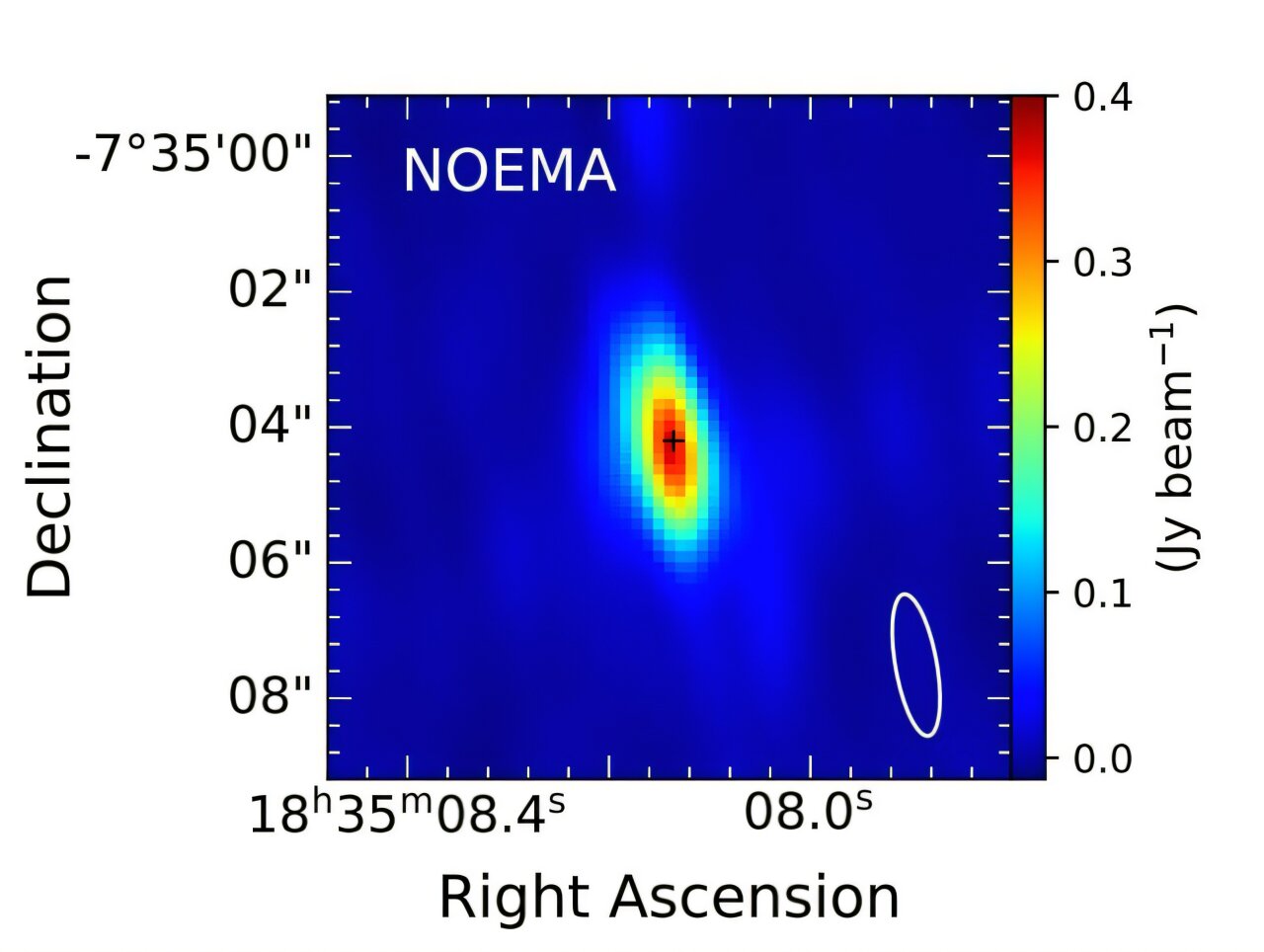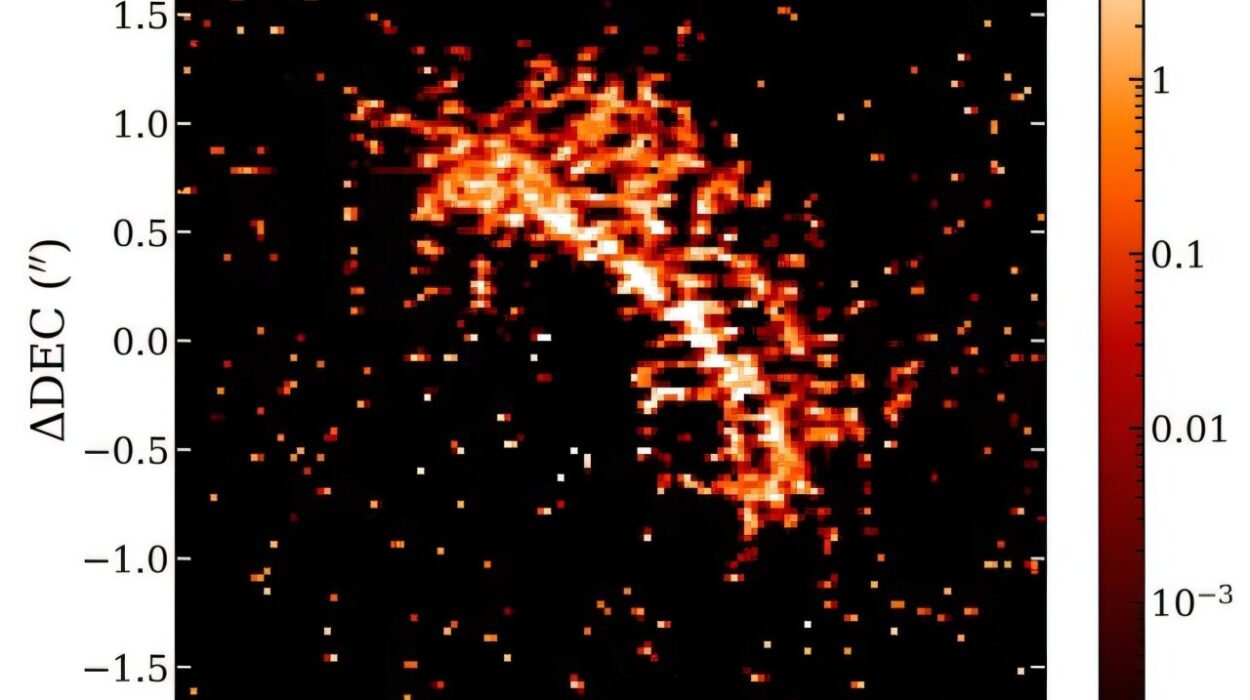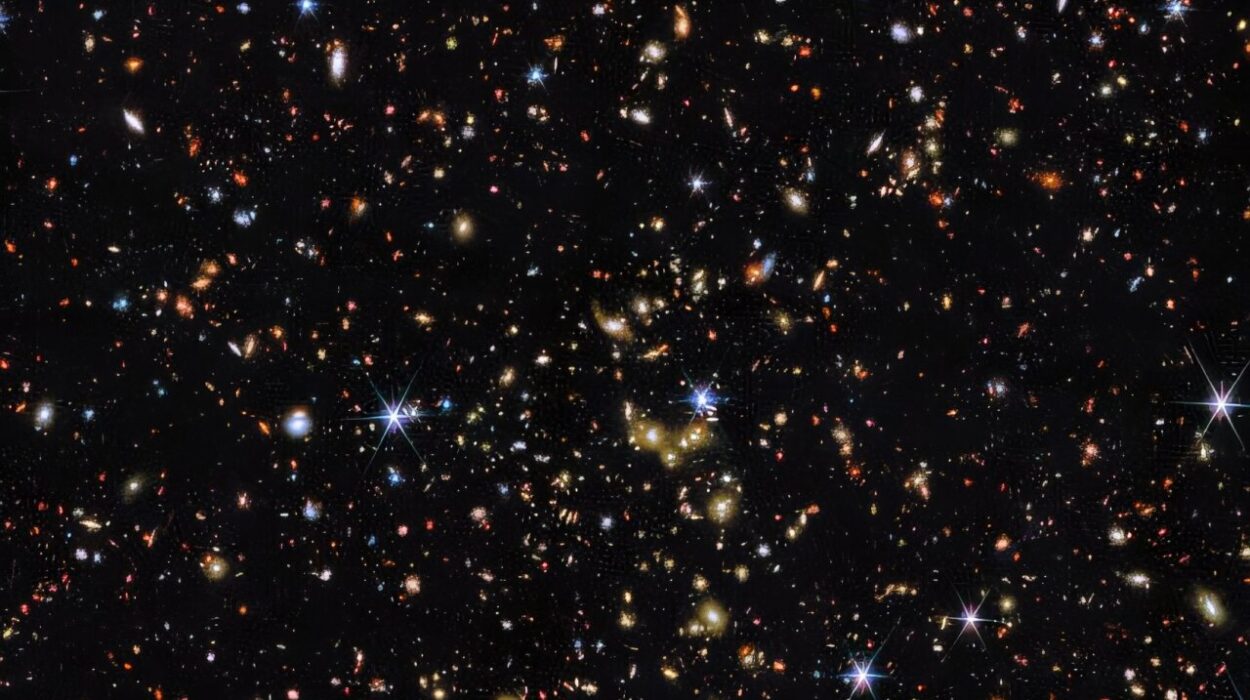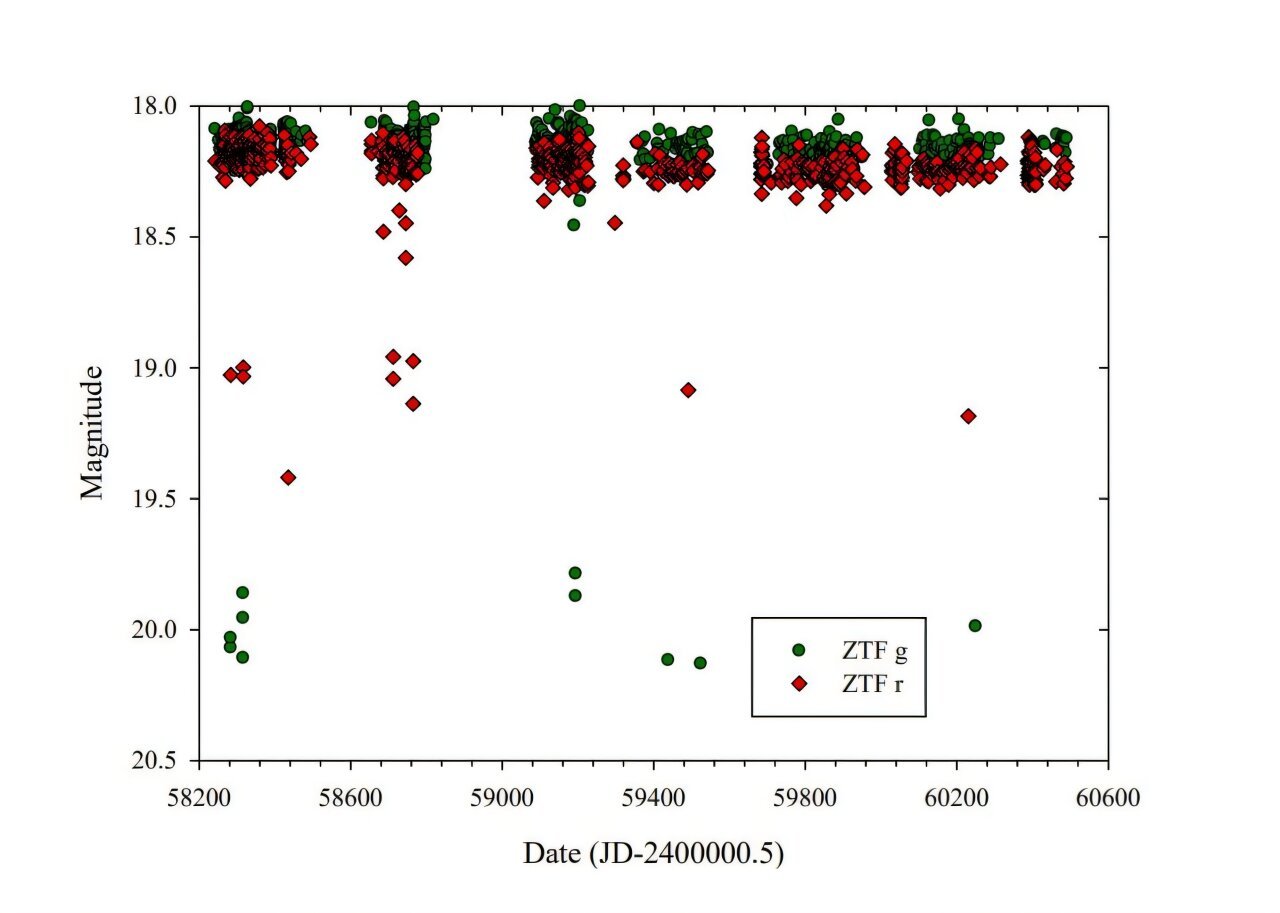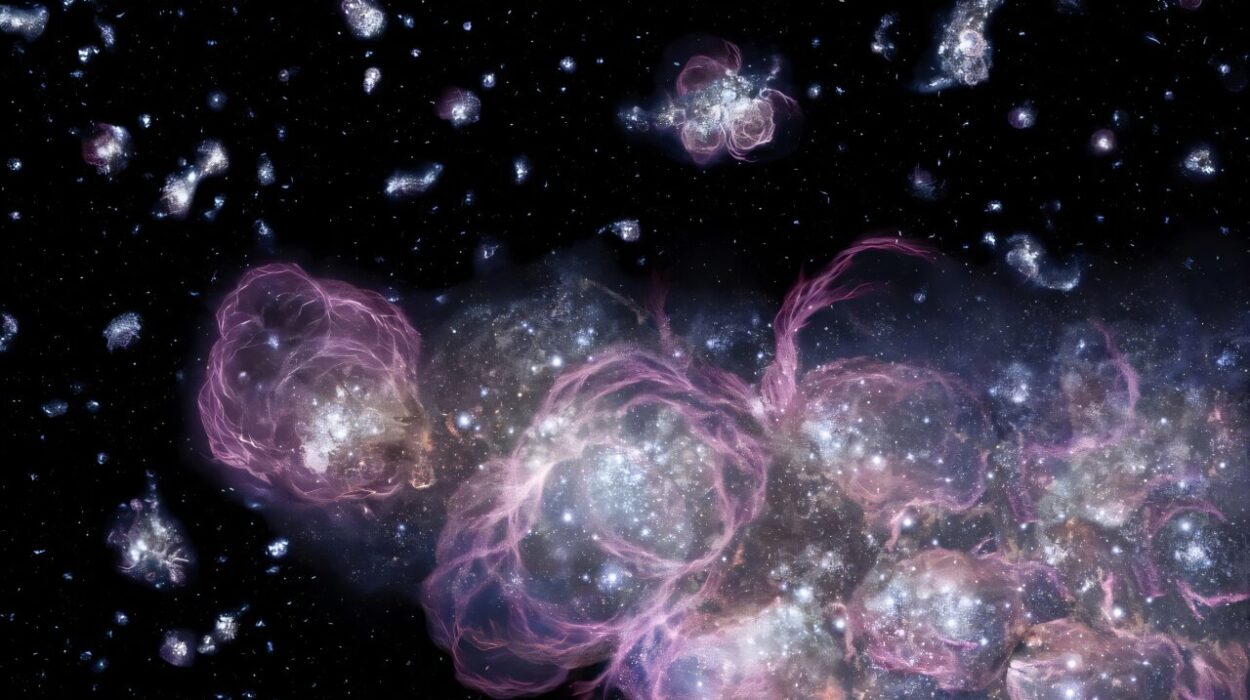Amid the swirling chaos of the interstellar medium, in a dark molecular cloud over 23,000 light-years from Earth, a cosmic drama has quietly unfolded—and cooled. A young high-mass star, G24.33+0.14, nestled deep within the Milky Way’s vast stellar nurseries, has just finished a fiery episode of stellar upheaval known as an accretion burst. Now, in a remarkable display of observational power, astronomers using the Northern Extended Millimeter Array (NOEMA) and the Atacama Large Millimeter/submillimeter Array (ALMA) have peered into this stellar cradle to witness the afterglow.
In their study, a team led by Xiaoyun Xu from Guangzhou University in China has captured a detailed picture of G24.33+0.14—G24 for short—as it transitions from an energetic feeding frenzy back into a calmer, cooling state. Their observations not only reveal fresh insight into the turbulent lives of young stars but also showcase the importance of millimeter and submillimeter astronomy in unlocking the secrets of star formation.
Young Stellar Objects: The Seeds of Stars
To appreciate the cosmic event unraveling around G24, we first need to understand young stellar objects, or YSOs. These are infant stars in their earliest phases of formation, still cloaked in the molecular gas and dust from which they are born. Like embryos within wombs, YSOs are invisible to the naked eye and even optical telescopes, but they shine brightly in the millimeter and submillimeter wavelengths that NOEMA and ALMA are designed to detect.
YSOs undergo growth by gobbling up material from the circumstellar disks that surround them. But this feeding isn’t a smooth, gradual process. Instead, it often occurs in fits and starts—violent episodes of rapid accretion punctuated by longer periods of quiescence. These outbursts, known as episodic accretion events, are critical for stellar development and can significantly alter the physical and chemical environment around a forming star.
There are two main classes of these accretion outbursts: EXor and FUor events. EXors—named after the prototype EX Lupi—are shorter, less intense flares that last from a few months to a couple of years. FUors, named after FU Orionis, are much more extreme, lighting up young stars by several magnitudes for decades or longer. G24, as it turns out, is a recurring performer in this cosmic spectacle.
G24.33+0.14: A Bursting Giant
G24 is not just any YSO—it is a high-mass young stellar object (HMYSO), a rare and powerful class of stars destined to become O-type or early B-type giants, burning at temperatures upwards of 30,000 degrees Kelvin and shaping their surroundings with powerful winds and radiation. Such massive stars form deep within dense clouds of molecular gas, making their early life stages challenging to observe.
What makes G24 particularly fascinating is its pattern of repeated accretion bursts. Previous observations revealed a cycle of approximately 8.5 years, with each burst lasting about two years—an unusual but crucial opportunity for astronomers to track changes in real time. Now, thanks to NOEMA and ALMA, scientists have caught G24 in a quieter, post-burst phase, allowing them to study how the protostar and its environment recover from such a high-energy episode.
Peering Into the Afterglow
The recent observations by Xu and colleagues mark a milestone in our ability to monitor high-mass star formation. Using high-resolution interferometric techniques, they compared G24’s post-burst phase to previous data, identifying subtle but telling changes in its structure and emission.
One of the key findings was a significant shift in continuum emission—the radiation produced by the heated dust surrounding G24. In the inner core, the emission decreased by around 20%, suggesting a notable drop in temperature. At the same time, the outer regions showed an increase in emission of about 30%. This outward migration of heat paints a compelling picture: during the burst, a wave of energy surged from the core outward, gradually warming the surrounding envelope of material. Over about six months, this heat wave propagated into the outer regions, warming dust that had previously been cooler and more dormant.
The implication is profound: accretion bursts don’t merely affect the inner disk or the star itself—they send ripples through the entire stellar cocoon, affecting temperature, chemistry, and potentially the conditions for planet formation.
Methanol as a Cosmic Thermometer
To dig even deeper into G24’s transformation, the team turned to methanol (CH₃OH), a common and sensitive tracer of temperature in star-forming regions. Methanol molecules emit radiation at specific frequencies depending on their rotational energy states, which are influenced by temperature and density.
The observations revealed a pronounced decline in methanol emission intensity following the burst. Interestingly, the higher the energy level of the methanol transition, the greater the drop in intensity. This clear pattern indicates that as the source cooled, the more excited, higher-energy states of methanol could no longer be sustained. In other words, the gas wasn’t just getting cooler overall—it was losing its hottest molecular populations first.
Moreover, by analyzing methanol’s rotational temperature and column density—the number of methanol molecules along the line of sight—the researchers found a subtle yet measurable decline in both within the inner regions of G24. Farther out, however, these values rose, echoing the pattern seen in the continuum data: a cooling core and a heating periphery.
This thermal gradient not only confirms the aftermath of the accretion burst but also offers a detailed snapshot of how energy propagates and dissipates within a star-forming envelope.
A Dynamic Birth: The Impact of Episodic Accretion
The study of G24 adds crucial evidence to the growing body of research suggesting that accretion bursts are central to the development of young stars, especially those forming at high masses. Far from being random or isolated events, these outbursts play a decisive role in sculpting the thermal and chemical landscape of stellar nurseries.
In G24, we see how the star’s episodic feeding frenzy created a thermal pulse that reshaped its environment—not just in terms of heat, but in the distribution of molecules essential to future planetary systems. These findings also support the idea that such bursts might influence the early chemistry of proto-planetary disks, potentially setting the stage for complex organic molecules and prebiotic chemistry.
Furthermore, observing G24 over multiple cycles could offer insights into the long-term behavior of high-mass YSOs—something that has long eluded astronomers due to the rarity and obscured nature of these objects.
Instruments of Precision: NOEMA and ALMA
This discovery would not have been possible without the technological marvels of NOEMA and ALMA. Both observatories specialize in millimeter and submillimeter wavelengths, ideal for probing cold gas and dust. ALMA, located on the high-altitude Chajnantor Plateau in Chile, is the most powerful facility of its kind, boasting 66 antennas that can operate in concert to produce razor-sharp images of distant cosmic structures.
NOEMA, nestled in the French Alps, complements ALMA by extending the ability to monitor northern skies with similar precision. The synergy between these two facilities allows astronomers to observe objects like G24 over time and across hemispheres, building comprehensive datasets that would be impossible from a single site.
These arrays operate on the principle of interferometry—linking multiple antennas across large distances to simulate a much larger telescope. This method provides the resolution needed to isolate features within stellar cocoons just a few thousand astronomical units across, despite being tens of thousands of light-years away.
A Future of Stellar Discovery
As telescopes like ALMA and NOEMA continue to improve, and as time-domain astronomy matures, our ability to monitor episodic phenomena like accretion bursts will only grow stronger. For G24, future observations could track the next expected burst in its 8.5-year cycle, offering a rare opportunity to capture both the rise and fall of such an event in exquisite detail.
Beyond G24, these methods can be applied to other HMYSOs across the galaxy, helping us build statistical models of stellar birth and test theoretical predictions about how massive stars grow and evolve. As we refine our understanding of how energy, mass, and chemistry evolve in these environments, we edge closer to answering fundamental questions about our own cosmic origins.
Conclusion: A Glimpse Into the Turbulent Birth of Stars
The cooling of G24.33+0.14 after its latest accretion burst offers more than just a case study—it provides a dynamic window into the chaotic process of star formation at its most extreme. Through the eyes of NOEMA and ALMA, astronomers have watched the aftereffects of a stellar heartbeat pulse outward, heating space, shifting matter, and altering chemistry.
What we’ve learned from this single object speaks volumes about the universe’s grand design. Stars do not simply ignite in silence—they roar, flare, and breathe, shaping their surroundings in complex and often beautiful ways. G24 has shown us that even in the quiet aftermath of stellar violence, there is much to discover. And with each new observation, we move closer to decoding the language of the stars.
Reference: Xiaoyun Xu et al, Cooling process of the high-mass young stellar object G24.33+0.14 following an accretion burst, arXiv (2025). DOI: 10.48550/arxiv.2504.19782
